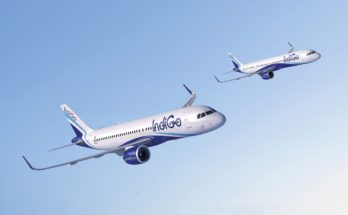
Mitsubishi Heavy Industries Ltd has suspended development of the M100 variant of its SpaceJet family of regional jetliners until further notice. During the suspension, the company will review and reconsider its plans to develop the 76-seat model. Service entry of the M100, which has not yet flown, had been scheduled for 2023.
Meanwhile, work on the 88-92 seat version of the SpaceJet, dubbed the M90, is going ahead. Earlier this year, Mitsubishi had postponed service entry of the M90 until the company’s 2021 fiscal year at the earliest. Mitsubishi’s 2021 fiscal year begins in April 2021 and runs through March 2022. Service entry of the M90 had previously been scheduled for mid-2020.
Mitsubishi has so far flown five M90 flight test aircraft, the latest in March 2020. However, the flight test schedule has been disrupted somewhat due to the COVID-19 pandemic.
Mitsubishi’s finances have also been impacted by the pandemic, and the company said that it is setting an appropriate budget level for the SpaceJet program due to the financial headwinds. Mitsubishi intends to reduce the budget for the SpaceJet program to JPY60 billion ($559 million) for its 2020 fiscal year.
Originally known as the Mitsubishi Regional Jet (MRJ) family, Mitsubishi rebranded the series as the SpaceJet family in June 2019. The MRJ90 was renamed the SpaceJet M90. A 76-passenger model, called the MRJ70, was dropped and replaced with a redesigned version called the SpaceJet M100.
The M100 is specifically designed to be compliant with current U.S. scope clause restrictions. Scope clauses in pilot contracts at the three U.S. major carriers prohibit their regional airline partners from operating any aircraft that has a maximum takeoff weight exceeding 86,000 pounds or (with one minor exception) that seats more than 76 passengers. The M100 can carry 76 passengers in a three-class seating layout. In this configuration, its maximum takeoff weight is 86,000 pounds.
The M90 can be configured with a 76-seat layout, but it would still exceed the 86,000-pound weight limit. Flying the M90 at a weight below that level would entail a significant sacrifice in range. Thus, due to scope clauses, the sales potential of the M90 in the large U.S. market is severely limited.
Opportunities for relaxation of U.S. scope clause limits will occur as the pilot contracts at the three U.S. majors come up for amendment or renewal. Indeed, all three contracts are currently amendable and are the subject of negotiations between the majors and their pilots. However, it seems unlikely that this round of contract renewals will result in scope relaxation, at least in regard to the crucial weight restriction. Such liberalization may have to wait at least until the next round of renewals, which will probably take place sometime in the 2022-2023 timeframe.
Raymond Jaworowski currently co-authors three of Forecast International's best-selling products: Civil Aircraft Forecast, Military Aircraft Forecast, and Rotorcraft Forecast. As a contributor to Aviation Week & Space Technology's Aerospace Source Book, he has authored Aircraft Outlooks, and provided input for the publication's Aircraft Specifications tables. Raymond has represented Forecast International at numerous conferences and trade shows, often as a featured speaker. He is a member of the American Helicopter Society. Prior to joining Forecast International, he worked at Industry News Service and, earlier, interned at the U.S. State Department's Bureau of Intelligence and Research.




